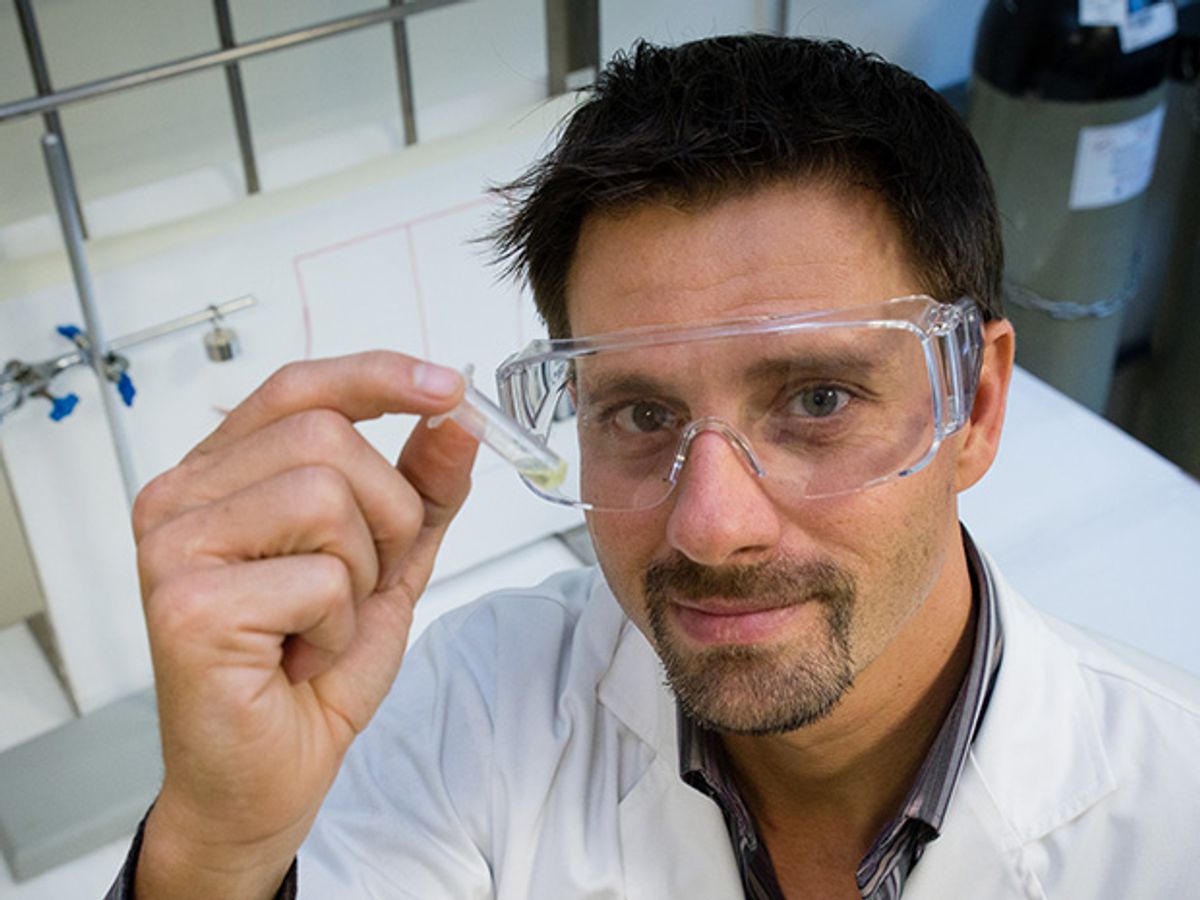Glue is playing an increasingly important role in manufacturing and technology—for example, in cars and airplanes, new and lighter materials, such as carbon composites and plastics are now an important constituant. And with such material, instead of bolts, screws and welds to hold things together, manufacturers are increasingly using high-quality glues.
The glues most of us are familier with are hardened and become adhesive by chemical means. For example superglue hardens due to a chemical interaction with the water vapour in air. Other ways glues rely on chemical changes induced by heat or light. However, these glues usually don't work in wet environments: Superglue will preferentially stick to water molecules instead of solid surfaces, for example.
Now a research group led by chemist Terry Steele at Nanyang Technological University (NTU) in Singapore has developed a glue that hardens when a low voltage is applied to it. They recently reported their research with the new adhesive, nicknamed “Voltaglue,” in Nature Communications.
“We had to find a way to make glue which cures (hardens) when we want it to without being affected by environmental conditions, so electricity was the best approach for us. The hardness of our glue can be adjusted by the amount of time we apply a voltage to it, which we call electrocuring,” says Steele in a NTU press release.
Steele cited two applications that highlighted the advantage of a glue whose hardness was easily adjustable: joining materials immersed in water or replacing sutures during surgery in human tissue. “For example, if we are gluing metal panels underwater, we want it hard enough to stick for a long time. However, for medical applications we want the glue to be more rubber-like so it wouldn’t cause any damage to the surrounding soft tissues,” Steele also says in the press release
The glue consists of a layer of hydrogel, a water based gel into which are dissolved carbon molecules called carbenes that are attached to plastic dendrimers, which are typically spherical large molecules. Using electrodes to apply two volts across the glue causes the carbenes to start bonding with other dendrimers and nearby surfaces. Once the voltage is removed, the bonding activity stops.
The researchers have patented Voltaglue through NTUitive, NTU's innovation and enterprise company.
The new glue may also make recycling easier. Cars could be designed in such a way that their components could become unglued and so more easily dissassembled. Steele and his colleagues are now researching ways to make the action of the glue reversible by, for example, changing the polarity of the applied voltage.



